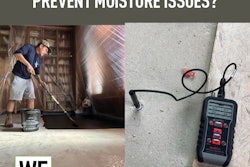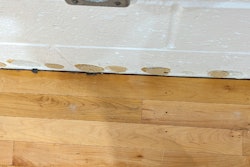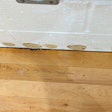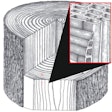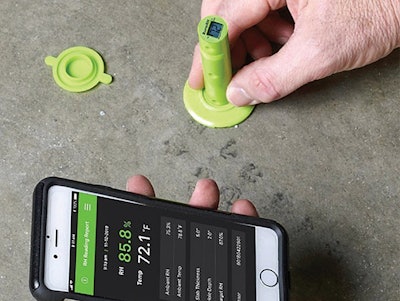
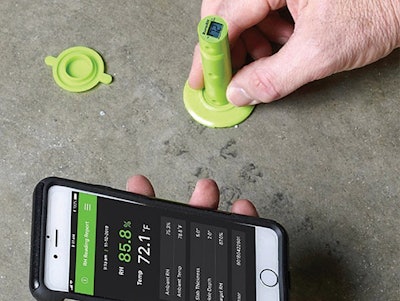 Many pros now prefer to test slab moisture using relative humidity tests instead of the traditional calcium chloride tests that have been used for decades. (Photo: Wagner Meters)
Many pros now prefer to test slab moisture using relative humidity tests instead of the traditional calcium chloride tests that have been used for decades. (Photo: Wagner Meters)
We glued down a new floor over a slab, and we noticed a smell and glue seeping from the spaces between the boards. We tested the slab with calcium chloride before installation. What's going on?
Jason Spangler, division manager—flooring at Rogue River, Ore.-based Wagner Meters, answers:
It sounds like the floor is experiencing adhesive breakdown, a catastrophic result of moisture content and high pH. If a concrete slab has a high RH, its moisture vapor can also contain high pH levels. If high enough, they can cause adhesive breakdown; the fluids in the adhesive leak instead of sticking.
The calcium chloride test, which measures the moisture vapor emissions rate (MVER) from the surface of a slab, is still commonly used in the wood flooring industry. This test was developed in the 1950s and consists of sealing a dish with a known weight of anhydrous calcium chloride crystals to a concrete surface for 72 hours. You then calculate the MVER by weighing how much moisture the crystals absorbed.
Today, many flooring manufacturers recommend measuring the slab using in situ RH testing. This testing is standardized as ASTM F2170 and involves placing in situ RH probes at specific depths in the slab. After allowing the RH probes to equilibrate, measurements of RH are taken to assess the overall slab moisture. Doing this on your job might have shown higher levels of moisture, even if surface moisture measured within acceptable limits. Always check with your flooring and your adhesive manufacturer to see what testing they require for their products.
RELATED: Mitigate Moisture: Reduce Risk of Callbacks on Slab Jobs















